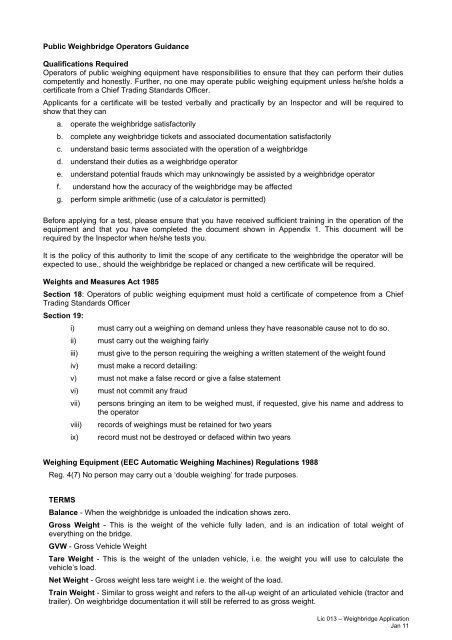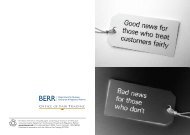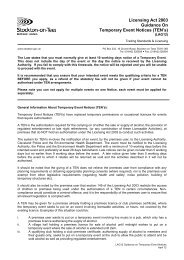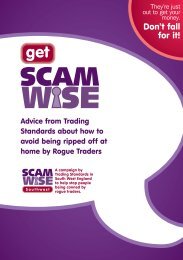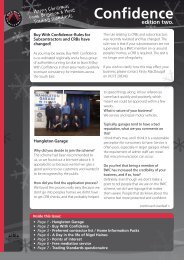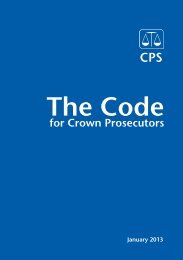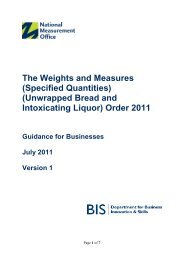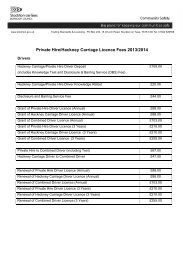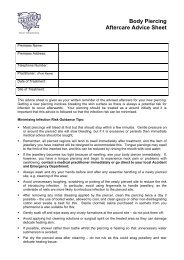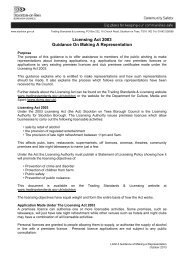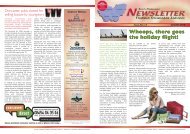View - Trading Standards Institute
View - Trading Standards Institute
View - Trading Standards Institute
You also want an ePaper? Increase the reach of your titles
YUMPU automatically turns print PDFs into web optimized ePapers that Google loves.
Public Weighbridge Operators Guidance<br />
Qualifications Required<br />
Operators of public weighing equipment have responsibilities to ensure that they can perform their duties<br />
competently and honestly. Further, no one may operate public weighing equipment unless he/she holds a<br />
certificate from a Chief <strong>Trading</strong> <strong>Standards</strong> Officer.<br />
Applicants for a certificate will be tested verbally and practically by an Inspector and will be required to<br />
show that they can<br />
a. operate the weighbridge satisfactorily<br />
b. complete any weighbridge tickets and associated documentation satisfactorily<br />
c. understand basic terms associated with the operation of a weighbridge<br />
d. understand their duties as a weighbridge operator<br />
e. understand potential frauds which may unknowingly be assisted by a weighbridge operator<br />
f. understand how the accuracy of the weighbridge may be affected<br />
g. perform simple arithmetic (use of a calculator is permitted)<br />
Before applying for a test, please ensure that you have received sufficient training in the operation of the<br />
equipment and that you have completed the document shown in Appendix 1. This document will be<br />
required by the Inspector when he/she tests you.<br />
It is the policy of this authority to limit the scope of any certificate to the weighbridge the operator will be<br />
expected to use., should the weighbridge be replaced or changed a new certificate will be required.<br />
Weights and Measures Act 1985<br />
Section 18: Operators of public weighing equipment must hold a certificate of competence from a Chief<br />
<strong>Trading</strong> <strong>Standards</strong> Officer<br />
Section 19:<br />
i) must carry out a weighing on demand unless they have reasonable cause not to do so.<br />
ii) must carry out the weighing fairly<br />
iii) must give to the person requiring the weighing a written statement of the weight found<br />
iv) must make a record detailing:<br />
v) must not make a false record or give a false statement<br />
vi) must not commit any fraud<br />
vii) persons bringing an item to be weighed must, if requested, give his name and address to<br />
the operator<br />
viii) records of weighings must be retained for two years<br />
ix) record must not be destroyed or defaced within two years<br />
Weighing Equipment (EEC Automatic Weighing Machines) Regulations 1988<br />
Reg. 4(7) No person may carry out a ‘double weighing’ for trade purposes.<br />
TERMS<br />
Balance - When the weighbridge is unloaded the indication shows zero.<br />
Gross Weight - This is the weight of the vehicle fully laden, and is an indication of total weight of<br />
everything on the bridge.<br />
GVW - Gross Vehicle Weight<br />
Tare Weight - This is the weight of the unladen vehicle, i.e. the weight you will use to calculate the<br />
vehicle’s load.<br />
Net Weight - Gross weight less tare weight i.e. the weight of the load.<br />
Train Weight - Similar to gross weight and refers to the all-up weight of an articulated vehicle (tractor and<br />
trailer). On weighbridge documentation it will still be referred to as gross weight.<br />
Lic 013 – Weighbridge Application<br />
Jan 11


